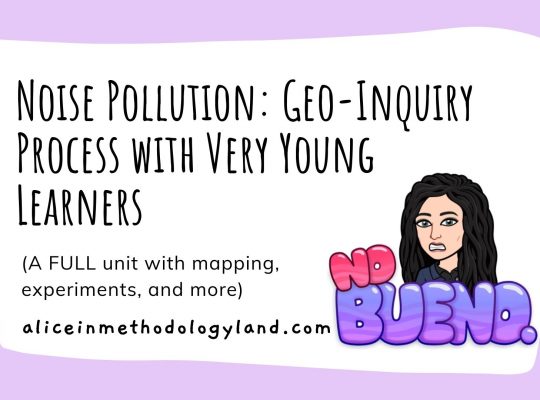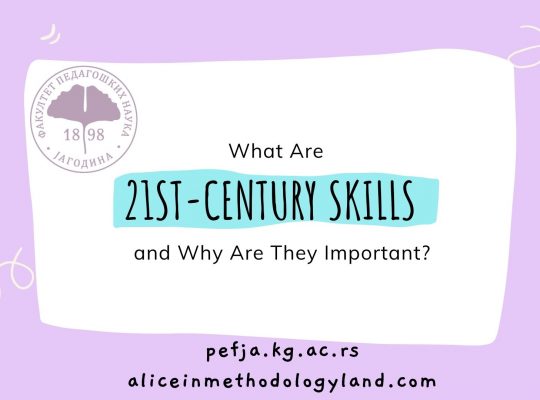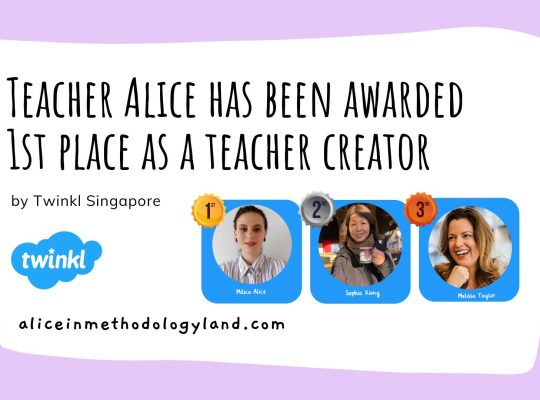Hello, my dear colleagues and welcome to my article about decreasing the ELT footprint with some practical examples on how to make your classroom more eco-friendly! Other than storytelling, environmental education is one of my favorite topics ever and I can always spend so much time just talking about it. I had the honor to present some bits and pieces of my research at the 18th Annual ELTA Serbia conference.
About the conference
The conference program had 3 plenaries, and many workshops and talks.
ELTA Conference gave us the chance to hear internationally renowned plenary speakers. It mirrored a wide range of theoretical and practical issues and developments in the teaching world. The participants took part in workshops, commercial presentations, and international exchanges among ELT professionals. In addition to all other benefits, there were numerous publishers’ and sponsors’ prizes and awards.
Explore the conference program for day 1 here
Explore the conference program for day 2 here
The theme of the conference was:
Be the change you want to see in the world.
– Mahatma Gandhi
Abstract

The talk will present crucial sustainable development goals and the significance of decreasing the ELT footprint. The research presented discusses the development of an English environmental preschool curriculum and its teaching framework. Some of the innovative methods used are Theme-Based Instruction, STEAM, Project-Based Learning, and ICT in education. The present educators will have a chance to listen to an interactive talk, create an online wall with activities together, see a video reflection from a National Geographic Educator certification course, and last but not least, they will be able to peek into the activities of an environmental preschool in Sweden. Last, but not least, the participants will have a chance to join a free online professional development course connected to early childhood environmental education and learn how can they make their classroom more eco-friendly.
Explore my presenter’s page on the conference.elta.org.rs.
What is sustainable development?
Sustainable development is the organizing principle for economic development while simultaneously sustaining the ability of natural systems to provide the natural resources and ecosystem services on which the economy and society depend.

Why are sustainable development goals important?
The sustainable development goals are the blueprint to achieve a better and more sustainable future for all. They address the global challenges we face, including poverty, inequality, climate change, environmental degradation, peace, and justice. There are 17 sustainable development goals at the moment.
What is the ELT footprint?
The ELT footprint represents the carbon footprint that we leave and create after our English lessons and the carbon footprint of the ELT ‘industry’ in general. For the record, I despise calling the English language teaching industry. TEACHING IS A CALLING, NOT A CAPITALIST SCHEME TO PRODUCE MONEY, HENCE IT CANNOT BE AN INDUSTRY. PERIOD. Sorry for the rant.
How can teachers change their practice to decrease the ELT footprint in their classrooms?
1. Content teaching – environmental education – you can introduce various environmental topics and concepts from climate change to conservation, by using CLIL, Geo-inquiry, outdoor learning, hands-on learning, etc.
2. Changing everyday classroom routines – making your classroom more low-waste in terms of resources, and activities. Developing more environmentally friendly rituals that impact the behavior of the students outside of the classroom.
It takes a lot of time, and trial and error until we all learn how to make a classroom more eco-friendly, but that doesn’t mean we should not at least try!
Early Childhood Environmental Education: Developing Awareness and Literacy Through Theme-Based Instruction in English: WHY IS NATURE IMPORTANT?!
The section below is a part of unpublished research so it must not be posted in the text format – it is posted as a picture so that it does not appear on Google.
Why is nature important?

Research framework
The framework for my research is meant to educate English teachers working with very young learners or preschool teachers who teach in bilingual preschools on environmental education concepts and outcomes, along with some methods that can be effective in bilingual environmental education.
My research framework consists of:

- National Geographic framework of environmental education as a basis upon which I developed the teaching outcomes (knowledge, skills, and attitudes present after the completion of the given lesson plan, adapted for preschool-aged children);
- 21st-century skills – focused on environmental awareness, activism at a young age, and critical thinking;
- E-STEM – Science, Technology, Engineering, and Mathematics used to create projects and make a change in the Environment, hence E-STEM;
- Hands-on and Project-based learning;
- CLIL and Theme-based instruction.
Environmental education at its best – A peek into the Swedish early childhood education

1. Reggio Emilia pedagogical approach
The Reggio Emilia approach is an educational philosophy that focuses on preschool and primary education. It has a student-centered and constructivist pedagogy that uses self-directed, experiential learning in relationship-driven environments. The program is based on the principles of respect, responsibility, and community through exploration and discovery through a self-guided curriculum. The children form their own personality during the early years of development and they know “a hundred languages”. The aim of the Reggio approach is to teach how to use symbolic languages (e.g., painting, sculpting, drama) in everyday life.
2. Open classrooms – no rooms, no walls
There are no specific classrooms for each class! The teachers rotate and share all resources, which is cost and space-friendly. I must say that I have never seen such a preschool in my life! The organization is completely different in my country.
The teachers have a schedule in which they rotate. This way, children get to use all the dramatic corners and all the classrooms. By doing that, they get to explore different settings and corners. They also mix with children who are younger or older than them.
3. Natural materials all around the preschool
The science center is full of natural materials, and multiple pets as well. The whole preschool takes care of fish, snails, and spiders.
The children go outside even if it is rainy and they don’t mind getting a bit muddy.
There are so many natural materials in the preschool – I was amazed and delighted to be there. Seeing a large dry sunflower on the shelf, branches, and rocks made my day. There are a few sensory sand tables as well. At this point, I concluded that Swedish environmental education is AMAZING! The method itself helps every teacher in the preschool to make a whole green curriculum by default, so they don’t have to worry about how to make the classroom more eco-friendly.
Read the full article and see some pictures by clicking on this link – Environmental Education at its Best – A Visit to a Swedish Preschool in Stockholm
A reflection video of a project done for the National Geographic Educator Certification course
A 3-minute video presenting a thematical unit consisting out of 3 lessons.
This project consisted out of 3 lessons, one of them is conducted outdoor. In lesson 1, the children will learn more about pollution, new vocabulary, as well as how to sort out the trash, and why is trash dangerous.
In lesson 2, we will use a treasure map to find our lesson location at the riverbank, next to the Danube. After that, we will have research on the riverbank, experiments, various water measurements, and fun activities.
In the last lesson, we will fill out a Danube basin map, emphasize the trash flow through the Danube basin, and have a video chat with children from Egypt, comparing the Nile and the Danube. We will start composing our plastic reduction plan for the school, and then share certificates from National Geographic for being plastic warriors.
Read the full post on this link: How National Geographic Certified Educator Course Changed my Perspective on the World and Teaching + Course Overview
A great moment in one of our outdoor lessons. ♥

What have I done to decrease the ELT footprint of my classroom?
Here are some things that I have done to decrease the ELT footprint of my classroom (explore the images in the interactive presentation)
- I created a DIY collection of color flashcards collected over the years (cut the images from newspapers and catalogs and laminated them), (read this post – How to Laminate With a Low-Waste? – Strategies for a Sustainable Classroom)
- Recyclable materials for crafting and collecting scraps of materials
- I made many paper puppets,
- Purchasing only second-hand books,
- Developing many digital materials,
- Reusing worksheets by putting them in a plastic pouch so that the writing can be wiped off after we finish.
You can also type and search ‘how to make my classroom more eco-friendly’, ‘how to make my classroom more green’, or ‘ELT footprint’ and you will see some amazing ideas shared by teachers around the world!
Bonus materials
To continue learning and exploring, here are some additional materials you can use to promote environmental education in your classroom:
- Article on the ELT footprint website I wrote with more than 50 free environmental education courses for educators (content and methodology).
- Click HERE to subscribe to receive my full National Geographic journal with 3 full lesson plans and more!
Academic references
- UN Sustainable development goals
- Vukadin D. M., Marković S. N., Developing…; УЗДАНИЦА; 2019, XVI/2; стр. 235–251
- National Geographic Educator Certification retrieved on 5.12.2020
- Teaching Global Climate Change course can be found on the following page, retrieved on 5.12.2020
- The Geo-Inquiry Process by National Geographics – retrieved on 5.12.2020.
- Maryland State Department of Education (2003). Maryland STEM.
- Breiner, J. M., Harkness, S. S., Johnson, C. C., & Koehler, C. M. (2012). What is STEM? A discussion about conceptions of STEM in education and partnerships. School Science and Mathematics, 112(1), 3-11.
To conclude: participants’ feedback
There were about 30 participants in the talk, which is amazing since environmental education is not everyone’s cup of tea. The feedback was really great, and there were a lot of great questions from the participants. I really wish we had more time to discuss. I was so happy to see that there are so many who are willing to learn how to make their classroom more eco-friendly!
One speaker highlighted that I should speak slower, and I do agree this was probably an issue – 30 minutes flew by. ?
Here’s a screenshot from the presentation where you can see some positive comments and a drawing on the screen. ??

What makes me especially happy after this conference presentation is the fact that I managed to inspire so many educators. Educators and acquaintances ask me: Why do you keep doing this? It’s useless. Why should I educate myself on how to make my classroom more eco-friendly when the kids will go home and their parents will not care?
Nothing is useless.
Every child who falls in love with nature at a young age will grow up into a policymaker, educator, parent, activist, or even revolutionary.
At this point, the thing that we need most is for this economic system to change to tackle corporate pollution. Who is going to do it other than the leaders of tomorrow? We haven’t done a good job so far.
I will keep on working on promoting environmental education in 2021 and I hope that we will soon see a change in classrooms around the world.
The world needs more green classrooms.
Presentation
Explore the interactive, clickable presentation below and see where is the hidden information and links I presented in the talk.
A few last words
If you enjoyed this article and if you are motivated to participate in the ‘green’ ELT classroom movement, feel free to contact me and I will show you how can you make your classroom more eco-friendly in just a few simple steps!







[…] https://aliceinmethodologyland.com/2021/01/11/decreasing-the-elt-footprint-how-to-make-eco-friendly-… […]